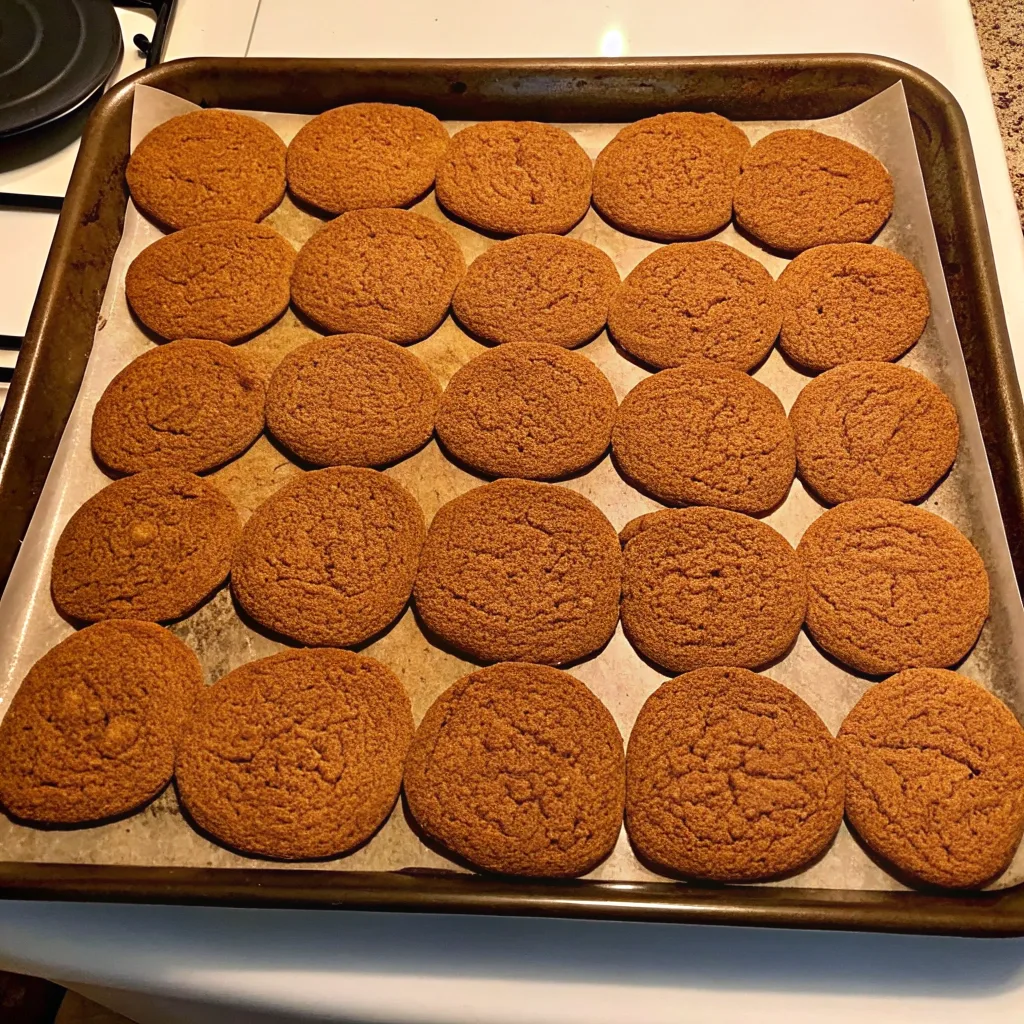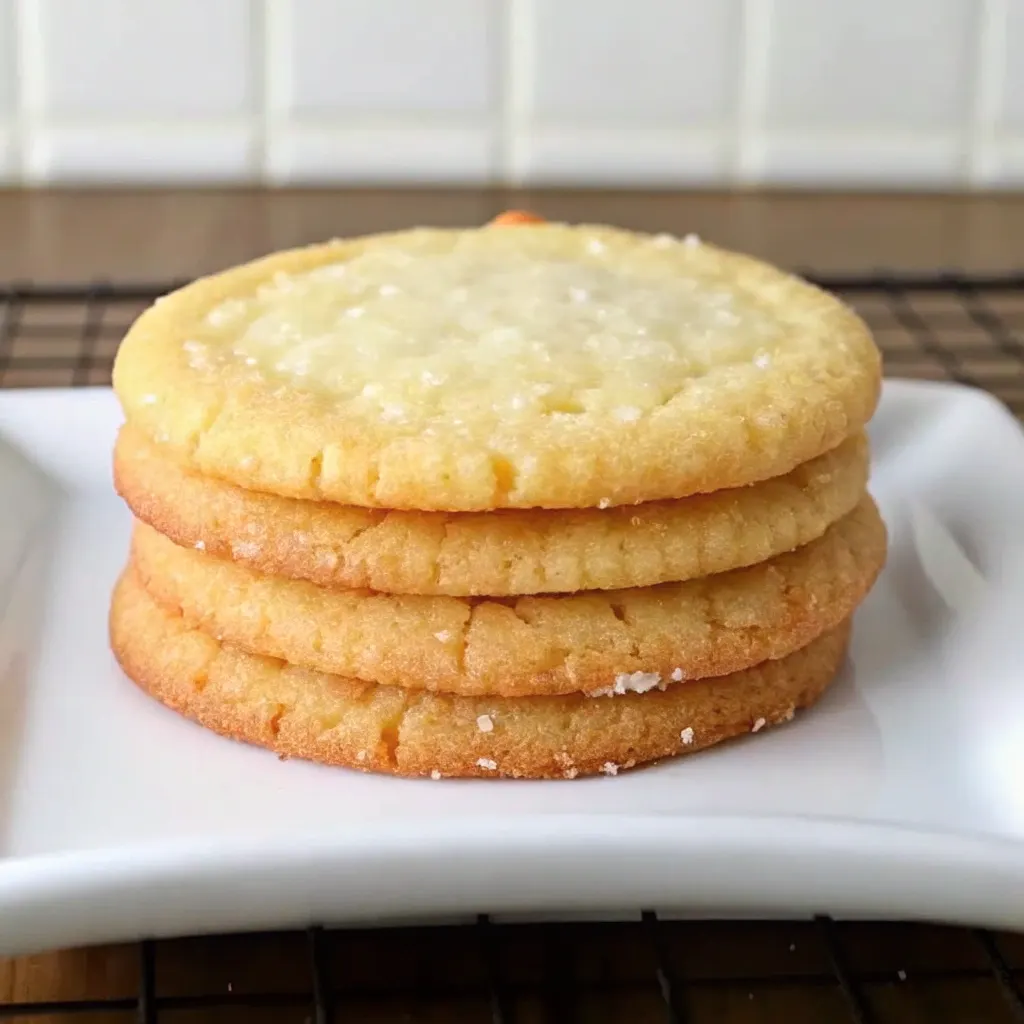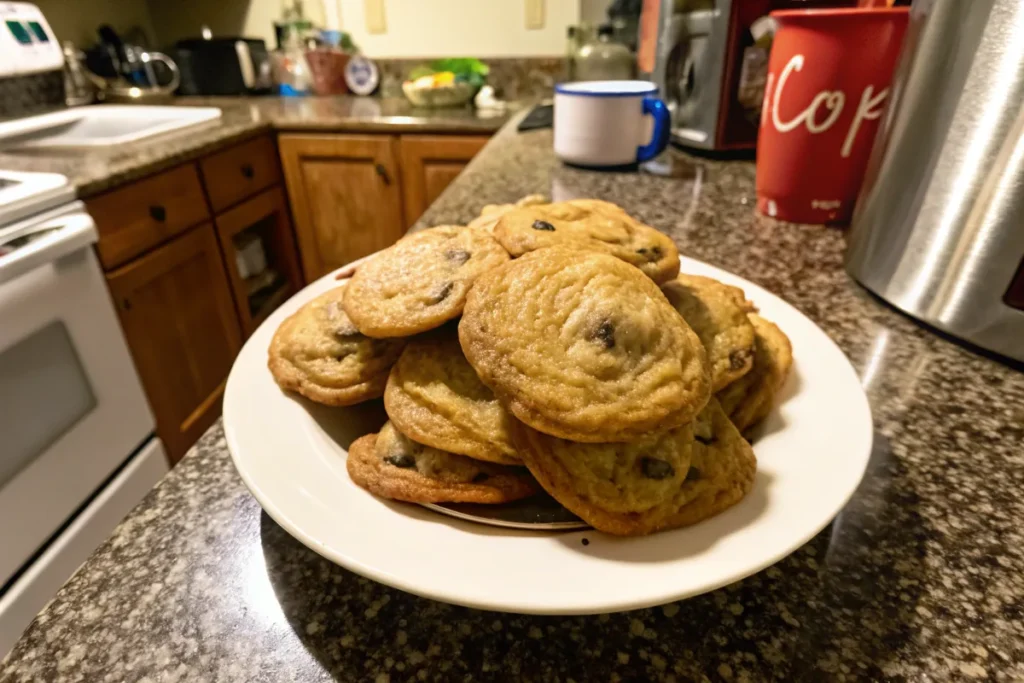I still remember the first time I tried baking cookies on my own. The sweet aroma filled the kitchen, and I eagerly waited for my batch to rise into soft, fluffy perfection. But when I pulled them out of the oven, they were disappointingly flat and dense. I had followed the recipe exactly—so what went wrong? Like many home bakers, I didn’t realize that small changes in ingredients, temperature, and technique could make a huge difference. If you’ve ever struggled with flat cookies, you’re not alone. Learning how to make your cookies rise more can completely transform your baking.
The secret to taller, fluffier cookies lies in understanding key baking principles. From choosing the right leavening agents to chilling your dough properly, each step plays a crucial role. In this guide, we’ll explore expert baking tips that will help you achieve perfect cookies every time. Whether you’re a beginner or an experienced baker, these simple tricks will ensure your cookies rise beautifully!
Table of contents
Understanding Cookie Anatomy
To make the perfect cookie, you need to know about cookie anatomy. Each ingredient adds to the cookie’s texture, taste, and look. Learning about these parts shows how they work together when baking.
The Science Behind Cookie Structure
The main parts are fats, sugars, flour, and leavening agents. Each one is key:
- Fats: Butter or oils add moisture and flavor, making the cookie tender.
- Sugars: Different sugars change sweetness and texture, helping with browning and caramelization.
- Flour: It gives the cookie its shape, with protein content affecting chewiness and texture.
- Leavening Agents: Baking soda or powder makes cookies rise, giving them a light and tender crumb.
Heat Reactions in Baking
Knowing about heat reactions in baking is key for great results. As cookies bake, many chemical reactions happen:
- Maillard Reaction: This reaction between proteins and sugars creates browning and flavor.
- Carmelization: Sugars melting when heated adds to flavor complexity.
- Expansion: Gases from leavening agents make cookies expand, giving them the right texture.
Understanding these processes helps improve your baking. Knowing cookie structure science is the first step to baking delicious cookies every time.
How to Make Your Cookies Rise More?
Every baker wants their cookies to rise perfectly, with a fluffy texture. Knowing the right ingredients for rising is key. The quality and type of leaveners used can greatly affect your cookies’ height and texture. Understanding the difference between baking powder and baking soda is important for your baking.
Key Ingredients for Rising
The main ingredients for cookie height include:
- Baking Soda: It’s a key leavening agent that reacts with acidic dough components, creating carbon dioxide bubbles for lift.
- Baking Powder: This mix of acid and base offers a double-acting mechanism. It works when exposed to moisture and heat.
- Eggs: Adding an extra egg yolk adds moisture and richness, making the cookies chewy.
- Butter: Using melted butter improves the dough’s texture and helps with rising.
- Flour: The right amount and aeration techniques keep the dough’s structure during baking.
The Role of Baking Powder vs. Baking Soda
In the debate of baking powder vs. baking soda, each has its own role. Baking soda needs an acid to activate, so adding acidic elements is sometimes necessary. Baking powder, with both acidic and alkaline components, makes baking easier. Both help cookies rise, but knowing how to use them is key.
By focusing on the right ingredients for cookie height, you can make them fluffier. Finding the perfect balance will make your cookies rise beautifully every time.
Choosing the Right Sugars
Choosing the right sugar for cookies is key to their taste and texture. The debate between brown sugar and white sugar shows how each affects moisture and rise. Knowing this helps you get the cookie you want.
Brown Sugar vs. White Sugar
Brown sugar has molasses, which changes its taste and how it bakes. It keeps moisture, making cookies chewy and dense. White sugar, on the other hand, makes cookies crispy and thin because it spreads more.
Using both can give you the best of both worlds: crisp and chewy cookies.
| Sugar Type | Moisture Retention | Texture Outcome | Flavor Profile |
|---|---|---|---|
| Brown Sugar | High | Chewy, dense | Rich, complex |
| White Sugar | Low | Crispy, thin | Sweet, simple |
How Sugar Affects Texture and Rise
The sugar you choose affects not just taste but also texture and rise. Granulated sugar makes air pockets, adding crispiness. Too much sugar can make cookies spread too much, making them flat and fragile.
Brown sugar’s acidity helps with leavening, making cookies thicker and softer in the middle. Mixing different sugars lets you find your perfect cookie.
The Importance of Butter Temperature

Knowing the right butter temperature for baking is key for perfect cookies. The state of butter greatly affects your baked goods. Softened butter makes cookies fluffier, while other states can cause problems.
Creamed Butter for Fluffiness
Creaming butter and sugar is a must in cookie making. Using creamed butter tips helps add air, making cookies lighter. Butter should be about 65°F for the best creaming.
Using room temperature ingredients, like butter, helps mix better. This is important for a smooth batter and even baking.
Using Melted vs. Chilled Butter
Choosing between melted and chilled butter changes your cookies. Melted butter makes dough denser, leading to flat cookies. Chilled butter, on the other hand, makes dough sturdier, helping cookies rise better.
Avoid cold butter from the fridge. It can mix unevenly and make cookies dense.
| Butter State | Effects | Recommended Use |
|---|---|---|
| Softened | Incorporates air, results in fluffier cookies | Ideal for creaming with sugar |
| Melted | Produces denser dough, leads to flat cookies | Not recommended for cookie recipes |
| Chilled | Sturdier dough, promotes better rise | Use for sturdy, shape-retaining cookies |
To get the best baking results, make sure your butter is at the right temperature. This will help you achieve the texture you want in your cookies.
Modifying Your Dough Consistency
Getting the right cookie dough consistency is key to making great baked goods. If your dough is too wet or too dry, knowing how to fix it is important. The flour you use can also affect how your cookies rise, so it’s worth understanding the differences.
Identifying and Fixing Wet or Dry Dough
Dealing with wet dough can be tricky. Here are a few tips to fix it:
- Add flour slowly until the dough feels just right. Be careful not to add too much.
- Try adding cornstarch to firm up the dough. Up to 60 grams can make a big difference.
- If your dough is too dry, a little bit of liquid or more fat can help.
The Effect of Flour Types on Cookie Rise
The flour you choose can really change how your cookies rise. All-purpose flour gives a good balance, while cake flour makes them lighter. Knowing about different flours can help you control your baking better.
| Flour Type | Protein Content | Impact on Cookie Rise |
|---|---|---|
| All-Purpose Flour | 10-12% | Creates a balanced rise with good structure. |
| Cake Flour | 7-9% | Leads to a tender cookie with a higher rise. |
| Bread Flour | 12-14% | Results in a chewier texture, with less rise. |
Understanding how flour and dough consistency work together can really improve your baking. By paying attention to these details, you can avoid common problems and get the perfect cookie rise.
Portioning and Spacing Your Cookies
Getting the right cookie size and spacing is key for perfect cookies. It helps them rise evenly and look the same. Knowing how to portion and space your cookies can make them better.
Cookie Size and Spacing Guidelines
For big cookies, aim for 5 to 6 ounces each. This makes about 12 large cookies per batch. For smaller ones, divide the dough into 24 pieces of 2 ounces each.
Remember to leave enough space on the baking sheet. This lets heat spread out, preventing cookies from sticking together.
The Impact of Dough Shapes on Rise
The dough’s shape affects how cookies rise. Round dough balls make taller cookies, while flat shapes spread more. Trying different shapes can change the cookie’s texture and look.
Knowing how dough shapes affect rise is important. It helps cookies keep their height and texture, even at 400°F (200°C).
Chilling or freezing the dough for 20 minutes makes cookies thicker. This helps them keep their shape while baking. Adjusting your portioning and spacing will make your cookies delicious and fun to bake.
Chilling Your Cookie Dough
Chilling your cookie dough is key to getting the perfect texture and flavor. It lets the ingredients mix well, making your cookies better. Knowing the benefits of chilling can make your baking better, giving you cookies that taste and feel great.
Benefits of Resting Your Dough
Resting your dough does more than just let flavors mix. It also helps control how your cookies spread when baked. With chilling cookie dough benefits like better texture and taste, your cookies will spread less. For example, dough chilled in the fridge can make cookies chewy in the middle and crispy on the edges.
How Long Should You Chill Your Dough?
Chilling time is important. You should chill your dough for at least one hour. For thicker cookies, chilling longer can make them even better. Knowing how long to chill cookie dough is key. For regular cookies, aim for one hour. More complex recipes might need longer chilling.
If you’re storing your dough, it can keep in the fridge for three days in an airtight container.
| Chilling Time | Cookie Types | Effects |
|---|---|---|
| 30 minutes | Sugar cookies | Standard spread, less flavor development |
| 1 hour | Chocolate chip cookies | Optimal texture, chewy centers |
| 2+ hours | Gingerbread cookies | Enhanced flavor and less spread |
| Overnight | Cut-out cookies | Best shape retention and taste |
Using these tips will improve your baking. For more on stopping cookies from flattening, see this guide. It helps you make the most of your cookie-making.
Technique Tips for Better Rising

To get your cookies to rise more, it’s key to master mixing and resting times. Mix gently to avoid over-aerating, which can make cookies flat. Letting the dough rest helps the gluten relax, making the cookies rise better when baked.
Gentle Mixing Techniques
Choosing the right mixing methods is vital for a good rise. Don’t stir too hard. Here are some tips:
- Mix just until combined to keep moisture and avoid too much air.
- Use the folding method when adding dry ingredients to wet, for a light touch.
- Add ingredients in stages to avoid overworking the dough.
These gentle methods will help you make the best cookies. They’ll have a great texture and rise well.
Resting Time Before Baking
Resting your cookie dough is important. It affects how your cookies turn out. Here’s why:
- Flavors meld together, making the dough taste better.
- Gluten relaxes, making the cookies tender.
- Less spreading during baking, for a nice shape.
Let your dough rest for at least 30 minutes. But 24 hours is even better. Cold dough spreads less, leading to a nice rise when baked.
| Resting Time | Effect on Cookies | Recommended Time |
|---|---|---|
| Minimum | Enhances texture | 30 minutes |
| Optimal | Improves flavor | 24 hours |
| Too Long | Can dry out | Avoid exceeding 48 hours |
Experimenting with Alt Ingredients

Choosing the right ingredients for baking cookies is key. Trying out different ingredients can make your cookies taste and feel amazing. Knowing the difference between shortening and butter helps you understand how they affect your cookies.
Using Shortening in Place of Butter
Using shortening instead of butter changes your cookies’ texture. Shortening makes cookies softer and chewier. This is because shortening is 100% fat, which prevents gluten from forming.
Butter, on the other hand, has water in it. This water creates steam when baking, making the cookies slightly tenderer. The choice between shortening vs butter often comes down to whether you prefer a flaky texture or a richer flavor.
What Happens When You Add More Eggs?
Adding more eggs to your cookie dough can make a big difference. More eggs add moisture and make the cookies richer. This is great for getting that perfect cookie height.
While most recipes use one or two eggs, trying two or three can improve the cookie’s taste and texture. But, be careful not to add too many eggs. This can make the cookies spread too much, changing their shape and taste.
Common Baking Mistakes to Avoid
Baking cookies can be tricky. You don’t want to make common mistakes that ruin your treats. Issues often come from wrong ingredient ratios and oven temperature. Knowing these mistakes can help you bake better cookies.
Too Much Sugar or Flour
Using the wrong amount of sugar and flour is a big mistake. Too much sugar makes cookies spread too much, making them flat. Too much flour makes them dry and crumbly. Always measure ingredients carefully, following the recipe closely. Make sure to level your flour correctly in the measuring cup.
Oven Temperature Troubles
Getting the oven temperature right is key. Recipes usually call for 350°F (175°C) for the best results. Without an oven thermometer, it’s hard to know if your oven is at the right temperature. This can cause cookies to burn or not cook evenly. Keeping your oven at the right temperature helps avoid these problems.
FAQ
How can I make my cookies rise higher?
To get taller cookies, use fresh baking powder and baking soda. Also, cream softened butter with sugar to add air. Chilling the dough before baking helps too.
What type of sugar should I use for fluffier cookies?
Brown sugar makes cookies moist and chewy. White sugar makes them crispy. Mixing both sugars gives a great texture.
Does the temperature of butter affect cookie rise?
Yes, using softened butter is key. Creaming it with sugar adds air, making cookies fluffier.
Why are my cookies flat and thin?
Flat cookies come from melted butter, wrong flour, or not enough leavening. Use the right butter and measure ingredients well.
How does resting or chilling cookie dough improve rise?
Chilling dough lets flavors mix and gluten relax. This improves texture and rise.
What mixing techniques help cookies rise?
Gentle mixing avoids over-aeration. Cream in air during mixing and rest the dough for better texture.
Does adding more eggs increase cookie height?
Extra eggs add moisture and richness, making cookies fluffier. But too many can make them caky.
What happens if I use too much flour?
Too much flour makes dough dry, leading to dense cookies. Always measure flour correctly.
How can I prevent cookies from spreading too much?
Chill the dough and use the right butter temperature. Avoid greasing the baking sheet. Parchment paper helps cookies keep shape.
When should I use baking powder versus baking soda?
Use baking powder without acidic ingredients. It has acid and base. Use baking soda with acidic ingredients for lift.
Conclusion
Starting your baking journey means learning how to make taller cookies. It’s all about the right ingredients and controlling the temperature. Each step is important for the final cookie.
Pay attention to your dough’s consistency and chilling it. The right mix of sugars and baking powder matters too. Stick to the recommended baking temperature and time for the best results.
With a bit of patience and practice, you’ll see big improvements. If your cookies keep deflating, check out this guide: understanding cookie science. It will help you become a better baker. Enjoy making perfect cookies!




1 thought on “How to Make Your Cookies Rise More.”